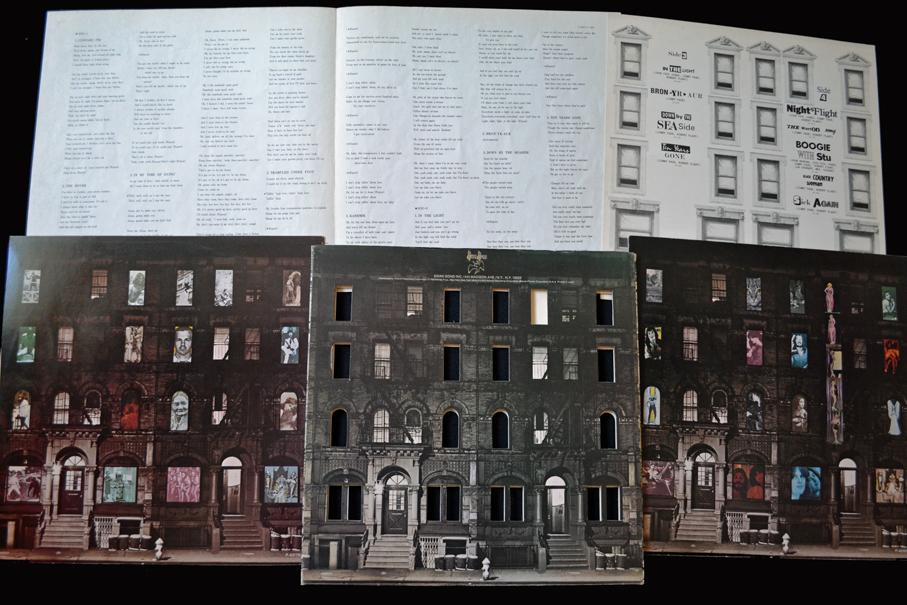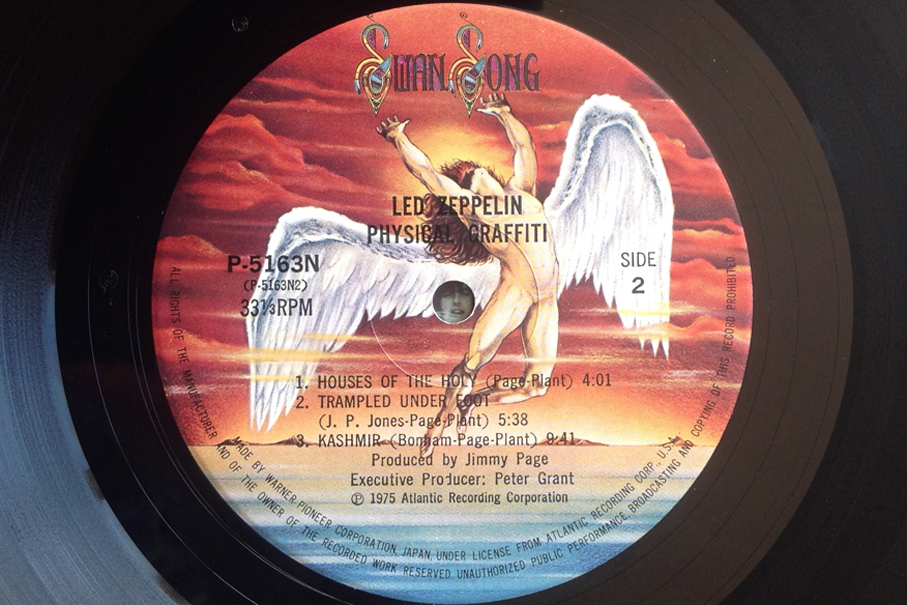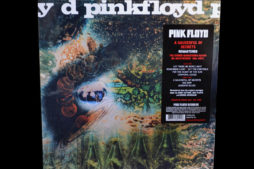Led Zeppelin – Physical Graffiti (2LP Vinyl) Original Japanese Pressing
Swan Song Records (1975)
$160.00
Very Rare 1975 Japanese First Pressing! Double Vinyl Set, Deluxe Package Still In Beautiful Condition! Unique Die-Cut Outer Cover With Windows & Fold-Over Card Insert. Includes Inner Sleeves, Plus 4-Page Japanese Insert With Lyrics.
1 in stock
CompareProduct Description
Very Rare Actual 1975 Japanese First Pressing! Double Led Zeppelin Vinyl Set, Deluxe Package Still In Beautiful Condition! Unique Die-Cut Outer Cover With Windows All Intact & Fold-Over Card Insert. Includes Both Colour Inner Sleeves, Plus 4-Page Japanese Insert With Lyrics In English & Japanese! The Sleeves & Card Slip Into The Cover To Make Various Different Scenes & Views Through Each Window.
Made By Warner Pioneer Corporation, Japan.
Condition – Vinyl: EXCELLENT! Couple of very light surface marks on Side 1, which do not affect play at all. Original vinyl ~ sounds amazing!!
Condition – Cover: NEAR MINT! Beautiful packaging, lovingly preserved for over 48 years!!
Japanese vinyl pressings are highly sought after by audiophiles and collectors, due to their premium sound quality and beautifully presented packaging. The sonic quality of Japanese records is regarded as the best in the world. No wonder all the original Mobile Fidelity Sound Lab records were pressed in Japan! The covers are printed on better quality heavy stock paper too. Top condition original ’70s Japanese pressings are becoming scarcer ~ and therefore more collectable and valuable every year.
Side 1:
Custard Pie
The Rover
In My Time Of Dying
Side 2:
Houses Of The Holy
Trampled Under Foot
Kashmir
Side 3:
In The Light
Bron-Y-Aur
Down By The Seaside
Ten Years Gone
Side 4:
Night Flight
The Wanton Song
Boogie With Stu
Black Country Woman
Sick Again












AMG –
Led Zeppelin returned from a nearly two-year hiatus in 1975 with Physical Graffiti, a sprawling, ambitious double album. Zeppelin treat many of the songs on Physical Graffiti as forays into individual styles, only occasionally synthesizing sounds, notably on the tense, Eastern-influenced "Kashmir." With John Paul Jones' galloping keyboard, "Trampled Underfoot" ranks as their funkiest metallic grind, while "Houses of the Holy" is as effervescent as pre-Beatles pop and "Down by the Seaside" is the closest they've come to country. Even the heavier blues -- the 11-minute "In My Time of Dying," the tightly wound "Custard Pie," and the monstrous epic "The Rover" -- are subtly shaded, even if they're thunderously loud. Most of these heavy rockers are isolated on the first album, with the second half of Physical Graffiti sounding a little like a scrap heap of experiments, jams, acoustic workouts, and neo-covers. This may not be as consistent as the first platter, but its quirks are entirely welcome, not just because they encompass the mean, decadent "Sick Again," but the heartbreaking "Ten Years Gone" and the utterly charming acoustic rock & roll of "Boogie With Stu" and "Black Country Woman." Yes, some of this could be labeled as filler, but like any great double album, its appeal lies in its great sprawl, since it captures elements of the band's personality rarely showcased elsewhere -- and Physical Graffiti towers above its hard rock peers of the mid-'70s.